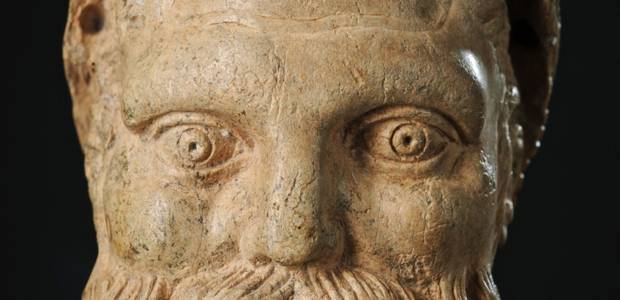Archaeological department
It is the oldest department of the Museum. It was formed in 1884 by founding the Istrian regional museum of archaeology whose legal heir is today our Museum. The first collection was made with private donations by collectors of antique items and materials found in archeological campaigns. In the first half of the 20th century the majority of the items were relocated to the museum's of Trieste and Pula while the remaining part that returned has been stored in the Town Museum for arts and history where the collection of archaeology had a special place. In the post-war period of the institution the person most responsible for collecting archaeological material was professor Ante Šonje who conducted reserches on locations, collected materials and items. The collection of the Department of Archaeology have been growing thank to the constant on-site research and preservation works.
Late ancient collection
Late ancient peirod collection is formed by fragments of creamics and glass, remains of stone monuments and fragments of paleochristian sarcofags from the 4th – 6th century. The objects are from sacred spaces in Poreč (Euphrasius basilica) and Vrsar (church of St.Mary) and partly random findings (Poreč, Vrsar, St.Lovreč Pazenatički).
Numismatic collection
The Numismatic collection counts more than 600 examples of coins and paper notes with the majority of roman imperial money and a smaller amount of money from the middle and modern ages. The museum items largely come from the Poreč old town area and were collected through archeological campaigns in the past 60 years.
Prehistorial collection
Curator: Davor Munda
The collection stores valuable objects from the bronze and iron age collected through the past years on the castelliers in the larger Poreč area (Picugi, Mordele, Mali Sv. Anđeo, Limska gradina, Sv. Martin kod Tara) and other parts of Istria. This collection testimonies about the rich material and spiritual culture of prehistorical population that lived in this area from the beginning of the II millenium until the Roman time. The collection is mostly formed by metallic and ceramic objects with a smaller part of bone and leather items.
Middle Ages collection
Curator Davor Munda
In the Medieval collection we treasure the archaeological matter of the early, middle and late Middle ages (6th to 15th century) from several medieval sites (Poreč, Sv. Lovreč Pazenatički, Vrsar, Sv. Mihovil na Limu, Muntajana - Anžići, Sv. Mihovil pod Zemljom). The collection helds more than 300 pieces, amongst them are stone sacral monuments and decorative architectural pieces (capitels, etc and other sacral furniture), jewelry (usually made from bronze), iron everyday items, fragments of medieval ceramics and in smaller amounts, glass and bone objects.
Loron collection
Curator: Davor Munda
This collection is formed by objects found during the systematic archaeological excavation on the Loron area that started in 1994. Loron is one of the most important archaeological sites on the Poreč territory where in the period between the 1st and the 5th century was located the biggest ceramics manufactory in Istria and even wider. Most of the objects found are ceramic (amfora parts, different shapes and sizes of pottery) while a smaller part are stone, glass, metal, bone and other objects of personal and daily use.
Ancient colletion
Curator: Davor Munda
In the Ancient collection we keep archeological items dating from the 1st to the 3rd century that witnesses life in the roman Parentium (Colonia Iulia Parentium) and its ager. We have a representative collection of stone monuments (cemetery monuments, stels, aras). Very interesting are daily use objects made of ceramics, stone, glass, iron, bronze, pottery, tools and equippment used in households and daily life. The majority of the objects we store, have been discovered through archaeological and hydro - archaeological campaigns after WWII. The most numerous belong to the researches made in old town Poreč and several roman villas as well as hydro - archaeological researches of the Poreč and Vrsar aquatorium.
Early modern period collection
Curator: Davor Munda
